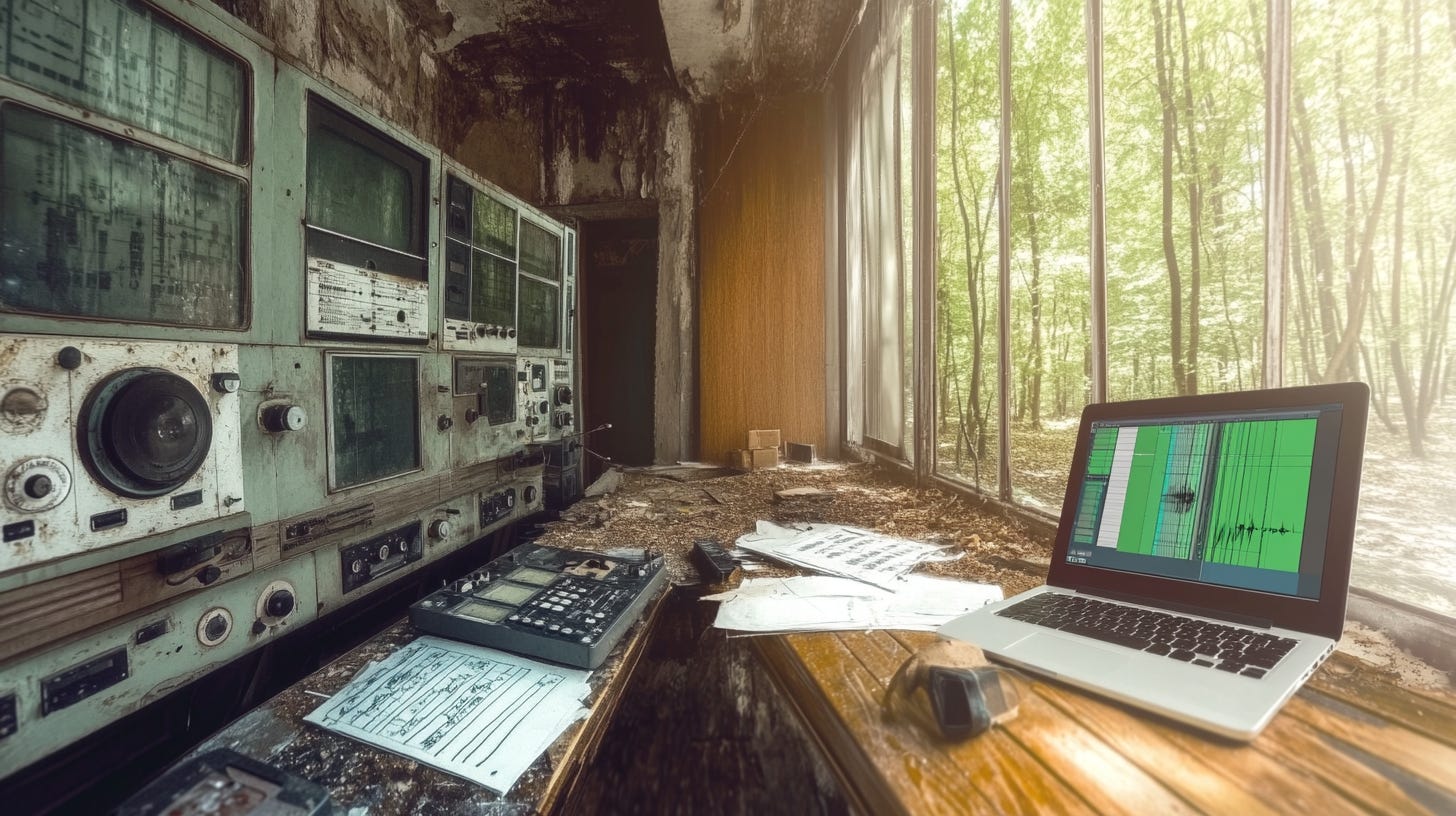2 - The Evolution of Legacy Media
How Institutions Built For Scarcity Could Survive An Age Of Abundance...
To Matter in the Future…
The older media institutions - broadcast giants, national newspapers, and heritage newswires - have always aspired to be central, trusted, and formative in the public imagination. Their desire remains: to define the narrative, to shape public discourse, and to serve as cultural infrastructure.
But this ambition is dismantled by a new reality. Today, audiences expect access, participation, and immediacy. The barrier to creation has dissolved. Legacy media no longer monopolise the means of production or distribution. They now confront a harder question: how can we still matter when we no longer control the pipeline?
To ground this enquiry, I’ll use a recurring illustration throughout this series: A Tale of Two Documentaries. One is made by a traditional broadcaster - complete with crew, compliance, and conventional production schedules. The other is made by a tiny team working from a bedroom/boat/van, aided by AI, mobile rigs, and direct-to-platform publishing. The stories from both teams make the same argument - but their processes, pace, and values differ profoundly. The contrast will help us track the transformation across each article in the series.
The Industrial Model Meets a Networked World
Legacy media were built for scarcity. The workflows, teams, and editorial structures assumed that cameras, bandwidth, and distribution were expensive and exclusive. Today, the inverse is true: abundance is the problem - not scarcity.
In our Tale of Two Documentaries, the legacy team fields a crew of fifteen, a post-production schedule lasting months, and a distribution deal that assumes fixed attention spans and appointment viewing. Meanwhile, a tiny team - even a single creator - operates from a van/boat/bedroom with cheaper cameras, AI-assisted storyfinding, creative development, editing, and direct audience dialogue via Substack and YouTube.
The legacy doc is polished, institutionally validated - but bureaucratic to make. The creator-led version is intimate, iterative, and evolving in plain sight - guided not just by intuition, but real-time feedback and narrative responsiveness. One structure is struggling to adapt; the other was born into the new conditions.
The Industry Reacts from Within
The 2024 Devoncroft report confirms this tension. The most invested-in trends are not about making better content - but about making content differently:
AI/GenAI ranks #2 in both strategic importance and budget allocation.
IP-based workflows dominate production priorities.
Automation and decentralised collaboration are on the rise.
These aren’t superficial tweaks - they’re structural adaptations. The industry is quietly shifting from industrial production to modular, platform-ready ecosystems. Yet many of these shifts remain skin-deep - pilot projects rather than emergent cultures.
From Broadcaster to Platform
The organisations that are engaging intelligently with the conflict are doing something bold: ceding control in favour of coherence. They are starting to act less like pipelines, more like platforms:
The BBC experiments with third-party content integration.
The New York Times expands into multiple verticals - news, games, cooking, sport - offering an editorially coherent ecosystem.
CNN, under new leadership, is restructuring to function across formats, with modular content designed for web, stream, and feed.
These institutions aren’t abandoning content - they are reframing their role in its creation and circulation.
A New Role…
Legacy media are not vanishing. But they are becoming something else:
A place where creators can be amplified and verified.
A structure that curates coherence from the chaos.
A scaffolding for trust in a distributed narrative landscape.
Those that don’t evolve risk becoming monuments to a broadcast past - admired but irrelevant.
In the Tale of Two Documentaries, the legacy crew may find its future not in making all the content - but in recognising, platforming, and contextualising the best of what’s being made.
Takeaways
The legacy model’s power was built on scarcity. Its relevance now depends on curation, collaboration, and credibility.
Trust isn’t inherited - it’s earned through adaptability and openness.
Institutions that transition from control to coherence will remain essential - not as broadcasters, but as storytellers with infrastructure.
Audiences are no longer waiting to be told - they are choosing whom to trust. Institutions that treat them as participants, not recipients, will matter most.
This is the first step in a larger journey. What follows is not just a shift in media economics, but in media identity. And the sooner institutions grasp this, the more useful - and powerful - they can become in the age of the creator.
Coming Next: 3 - The Emancipation of Creators
Read the previous parts:
1 - Broadcast Media, Wither or Whither?
This is part of Media Unmade - a series about how media breaks, reforms, and adapts in the age of AI and creator autonomy.
💬 Add your thoughts in the comments. Subscribe to follow the series. Let’s see where this thing’s going.
If this article resonates - or challenges something you’ve assumed - I’d love to hear from you in the comments. Subscribe if you’d like to follow this series on the future of media, creativity, and storytelling.



The rebel in me used to think that technology would fundamentally destroy legacy media of all shapes and sizes, but over the years, I've come to a similar conclusion that you presented in this piece. Legacy Media isn't going anywhere, at least not for a very long time, because A. There's too much money on the table, and B. if advances in technology foster too many content creators, they'll be in the best position to capitalize on that by using their branded recognition and money to elevate the best talent within those decentralized pools.
Great read!